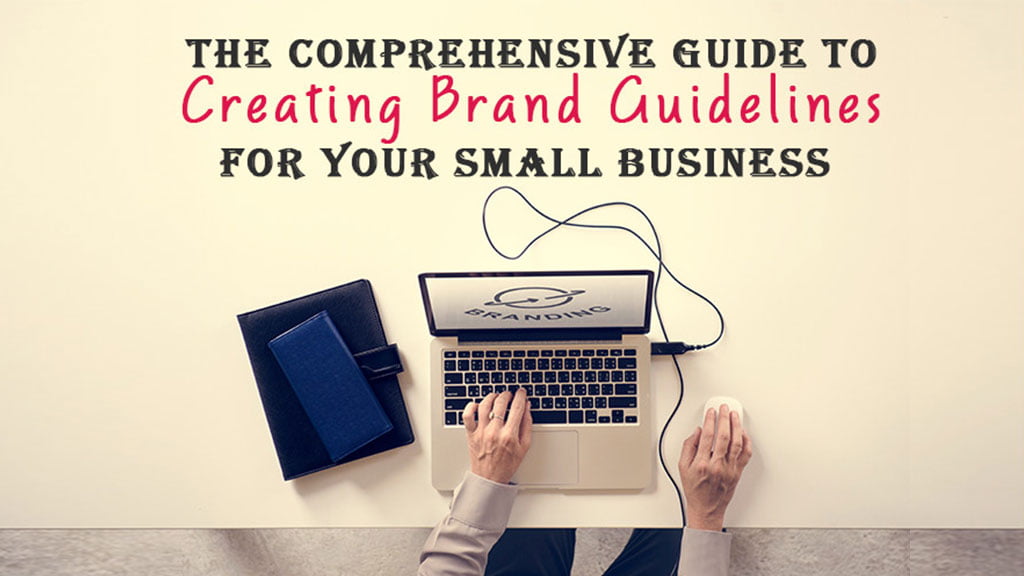Digital Marketing Solutions: What, Why & How to Start
Very often, small business owners assume that Branding is solely for BIG businesses with BIG marketing budgets. Well, the truth cannot be farther than that. Here, in this week’s post, we talk about all things branding – why your small business needs one and how to get started with branding guidelines. And, the best part – we’ve kept it all jargon-free. No mystifying terms or complicated tech-speak.
Without further delay, let’s dive right into the topic.
Why should Small Businesses focus on Branding?
Here, at Webfries, we are all in one complete digital marketing solutions providers in Gurgaon who can imagine perfectly what you’re going through as a small business owner – wild ideas flying around your office, umpteen things to be done, meeting potential clients, marketing your products, scouting for the right employees, and a never-ending to-do list!
With so much to do and so little time to get it done, we’re sure that branding is not the first thing that is on the top of your mind. We’re sure that you’re thinking, “My time is better spent on product creation, reaching out to potential clients, and marketing my products, rather than on tweaking my brand identity.”
While all these are important, here are three reasons why you shouldn’t lose focus on your branding:
Reason 01: It helps to Maximize your Resources
When you’ve got a brand guideline in place, you needn’t start from scratch for every single thing you design. It helps to streamline decision-making across several business components like:
- Website
- Sales and customer service
- Marketing
- Business Signage and Interiors
- Social media
- Communications
- Content marketing
- Stationary and other printed materials like flyers, newsletters, etc.
Reason 02: Makes your Business look and feel professional
Even if you’re a single-person run business, having a unique look for your brand, kicks things up a notch. All your designs – from your email, and business cards, to your presentation, and product packaging – should be consistent.
By being consistent, you make a bigger impact on your audience, as every piece of content and product from your brand, reinforces the image of your brand. People learn and perceive who you are, just by looking at your branding.
Reason 03: Distinguish your Business from your Competitors
When you have a well-defined brand image, you can easily stand out from your competitors. As a result, your potential audience can connect and identify your brand easily, among your dozens of competitors.
The key takeaway – Here’s the thing, consistency is key to building an authentic, trustworthy, and easily identifiable brand image.
With that said, staying consistent is difficult if you’ve got no rules to play by. This is where brand guidelines come into the picture.
In the next few sections, we’ll cover the following:
- What are the brand guidelines?
- What do brand guidelines include?
- How to create, maintain and use your brand guidelines?
First things first,
What are the Brand Guidelines?
Simply put, these are a set of rules to represent your brand across various channels. Brand guidelines help your business gain credibility and recognition, as you grow.
Generally, brand guidelines include visual guidelines like logo colours, colour palette, typography, imagery, the company’s mission, brand voice, and more.
If all this feels overwhelming, worry not! We’ll help you out. The starting point for defining your brand guidelines is to start work on your logo. Once you’ve finalized the logo, you’ve also decided on the typography and colours to use for your business, in the process.
What Should All Be Included in your Brand Guidelines?
Remember that brand guidelines vary from one business to another. Your business may or may not need the components listed below. So, don’t include them all just for the sake of having it. Instead, analyze each component and find out whether it suits your business requirements, before adding it to your brand guideline document.
Brand Guidelines generally include:
- Logo guidelines
- Typography
- Colour palettes
- Usage examples
- The mission statement of the brand
- Brand voice guidelines
- Detailed specifications for packaging, print materials, email marketing
- Brand voice guidelines
- And more
In-depth Explanation of what’s included in each component:
Logo Guidelines
Remember that your logo is the face of your brand. If it’s used in different ways across various channels, then it makes it difficult to recognize your brand.
Think of some iconic logos like – coco-cola, Apple, Nike, Mc Donalds, etc. Irrespective of the place and medium you spot these logos, they have the same size ratios and proportions, colours, and fonts. This is why these logos have become instantly identifiable.
Here are the specific logo guidelines to include in your overall brand guidelines:
- Elements of the Logo
This includes detailed specifications about the various elements that make your logo like icon, slogan, word-mark, etc.
- Colour Variations
Mention the default colour of your logo along with other variations like black and white logos, transparent logos and other colour variations if permitted.
- Clear Space
All logos need a clear space to ensure that it’s visible. The general rule of thumb is that logos should be surrounded by clear space that is 10% of the total size of the logo. Ensure that the clear space is free from the text and other graphical elements.
- Unacceptable Uses
To ensure that your logo is always used in the right way, you have to give examples of what NOT to do with your logo. For instance, don’t change the sizing ratio, don’t make it semi-transparent, don’t rotate, don’t change the scale, etc.
- Colour Palettes
You have to mention the colour palettes:
- Primary colour palette
This includes the exact colours of your logo. Specify the colour names along with the codes for various uses (RGB and HEX for digital uses, CMYK for print uses).
- Primary colour palette
This includes the exact colours of your logo. Specify the colour names along with the codes for various uses (RGB and HEX for digital uses, CMYK for print uses).
- Secondary colour palette
This includes complimentary brand colours used for headlines, text, and other components of the design.
- Typography
This section gives details about the typefaces, main fonts, and secondary fonts used for your logo, headlines, body text, and more.
- Usage Examples
This section contains examples of your logo, fonts, and other design elements used on items like t-shirts, packaging, business cards, etc.
Other Sections to Include in your Brand Guidelines
- Mission Statement
This specifies the “what” and “why” of your brand. Spend some time refining and creating your mission statement, as it would set the tone for all your future branding efforts.
- Imagery Examples
Give examples of images you want to be included in your brand designs. It can either be stock photographs or real photographs, based on your preferences.
- Brand Voice
Start by identifying how you want your brand to sound. For instance, professional, friendly, casual, hip and peppy, helpful, and so on. Once you have identified your voice, use the same tone for all your content – website, blogs, social media, press releases, etc.
Finally, How do Create Brand Guidelines?
Most businesses create brand guidelines as a PDF files, that can be easily shared with all employees, third-party designers, and so on. To start, you can use either Google Slides or Microsoft PowerPoint to help you out.
Add all the components mentioned above. Include images, screenshots, clipart, etc. to make it visually appealing and easy to understand.
Once completed, save it as a PDF.
Here are Three Ways to Maintain and Use your Brand Guidelines PDF:
- Share a copy of the brand guideline with all your designers. Store it in an easy-to-access place like a cloud drive, where it can be accessed easily by all those who need it.
- Assign a dedicated person to own the original document and update it, either semi-annually or annually.
- Make sure to share the document with recruits as well as freelance designers and printers.
Final Thoughts – Aim for Progress and Not Perfection
Creating a brand guideline for your business is not possible overnight. There is plenty of strategic thought and creative insight that goes into the process. So, instead of trying to create a perfect brand guideline at the outset, start small and keep on refining it, till you get what you desire.
And, if you need any help with designing the perfect brand guideline for your small business or any other branding services, don’t hesitate to get in touch with our team of expert designers and brand specialists, here at Webfries, a digital marketing company in gurgaon who can be your friendly digital media partner.


